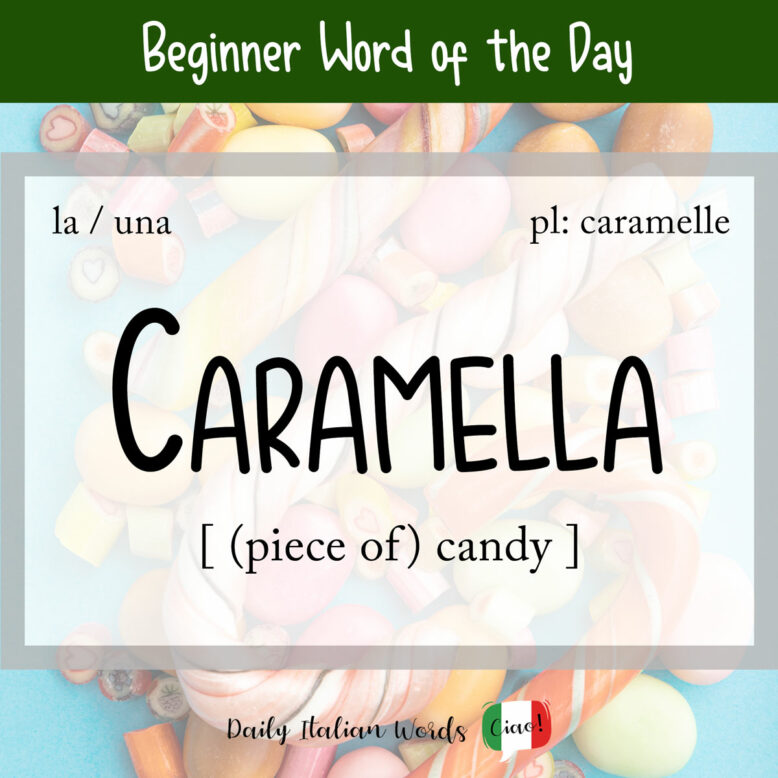Both the English caramel and the Italian caramella derive from the Spanish caramelo, which in turn can be traced back to the Latin calamellus, the diminutive of calamus (sugarcane).

Caramel and caramella can be considered false friends, however, in that the Italian word refers to any piece of candy or sweet made of sugar, whereas the English word denotes a specific kind of candy – that is, the soft brown toffee made with sugar and butter, or the syrup it resembles.
Caramella is a feminine noun whose ending changes to -e in the plural. Here are its definite and indefinite articles:
- la caramella = the (piece of) candy
- le caramelle = the candies / the candy
- una caramella = a (piece of) candy
- (delle) caramelle = (some) candies / (some) candy
Note: In American English, candy can be a mass noun referring to more than one piece of candy, whereas in Italian, it is necessary to use the plural caramelle if more than one piece of candy is involved.
Le caramelle fanno male ai denti.
Candy is bad for your teeth.

Here are some different kinds of caramelle in Italian:
- caramella morbida = toffee
- caramella gommosa = gummy
- caramella alla menta = peppermint
- caramelle ripiene = soft-centred candies
- caramelle digestive = digestive candies
If you buy a sacchetto pieno di caramelle (bag full of candies), and each one is wrapped in paper, you can use the verb scartare to say you’re unwrapping the candy.
I bambini stanno scartando le caramelle.
The children are unwrapping the candies.
Related to the word caramella is the verb caramellare which, as you might have guessed, means to caramelise or to coat in caramel. From this verb we also get the past participle caramellato/a which means candied or caramelised.
Heather Broster is a graduate with honours in linguistics from the University of Western Ontario. She is an aspiring polyglot, proficient in English and Italian, as well as Japanese, Welsh, and French to varying degrees of fluency. Originally from Toronto, Heather has resided in various countries, notably Italy for a period of six years. Her primary focus lies in the fields of language acquisition, education, and bilingual instruction.


